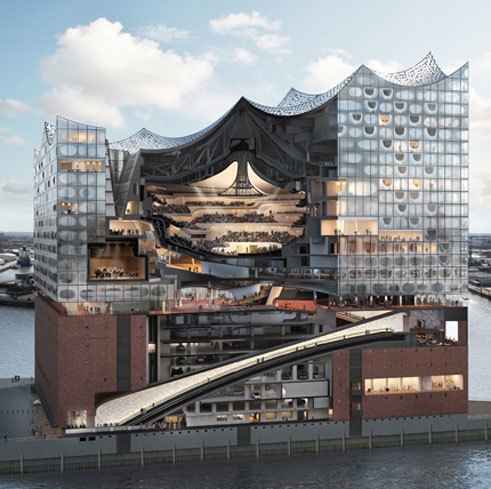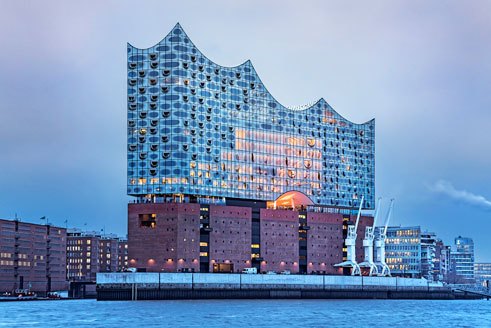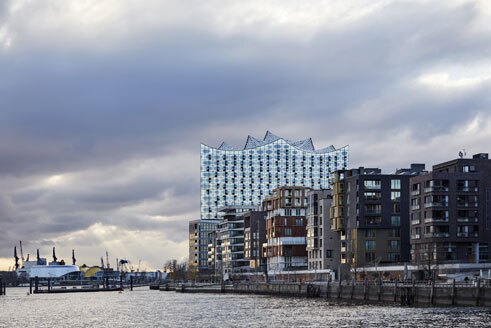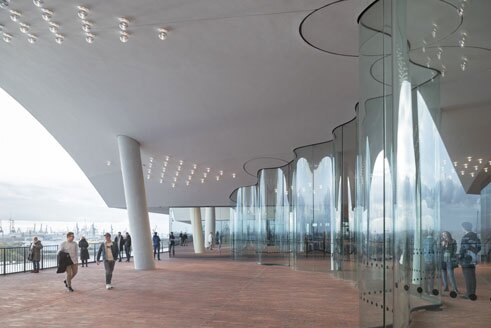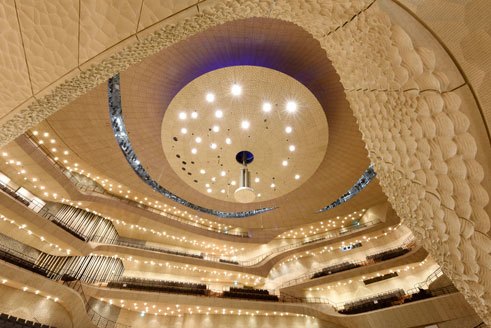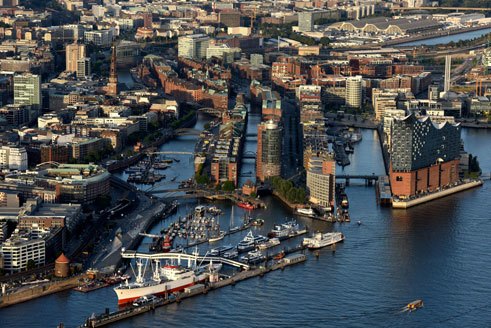Elbe Philharmonic Hall
Landmark with a mission
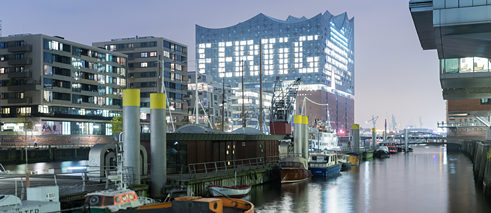
The Hamburg Elbe Philharmonic Hall has opened its doors. From former critics there is now little to be heard. But it remains to be seen whether the Elbe Philharmonic can fulfil the promise its proponents have been making throughout the years.
The dramaturgy has succeeded. For months, those in charge have repeatedly disclosed short glimpses along the way to the opening of the Hamburg Elbe Philharmonic Hall (Elbphilharmonie): here a press conference (in the car park) and there a multi-media installation (in the Music Education Centre); in November the public plaza from which you enter the concert hall was opened, and in early January the dancers of Sasha Waltz & Guests explored the building. Only in the two concert halls themselves were the first tones be really, really heard by the public on 11 January 2017. This is building up suspense according to the book.
Euphoria in the city
Those who wish to describe the prevailing mood of the city can hardly escape the word “euphoria”. The Elbe Philharmonic in the harbour of Hamburg is on almost everyone’s tongue. Everyone wants to go there, if not to attend a concert (the opening season is hopelessly sold out), then at least to get so close to it as possible. Just to get to the plaza, with its 360-dergee vista lying 37 metres above the harbour, the River Elbe and the city silhouette, people queue up on weekend before the entrance of the curved moving staircase called the “tube”.
Sounds like a cultural fairy tale complete with a happy end. But of course it didn’t always look this way. The history of the Elbe Philharmonic is one of greed and megalomania, naïveté and overextension. In retrospect, you can hardly credit the enthusiasm with which the city fathers fell upon the futuristic design of the Basel architects Herzog & de Meuron. A temple of the Muses for Hamburg, a city better known up to now as the home of moneybags? Yes! A new landmark! One of the best concert halls in the world! Architecture of the century! And the most beautiful part was that it was all supposed to be free.
A changing story
The plan was that the city contributes only the land and the costs would be refinanced through privately marketed building areas. But covetousness grew and grew, and by the time the legislative assembly passed the project in 2007 the share of public cost had climbed to 114 million euros. By the end of 2008, the city announced a new increase of 323 million euros and a new date for the Philharmonic’s opening. And so it went. The costs rose. The opening date was postponed, and in the meantime the general contractor, Hochtief, stopped construction work altogether. No commentator could avoid the comparison to such large-scale projects as Stuttgart 21 or the new Berlin Airport, and even the harassed artistic director of the house, Christoph Lieben-Seutter, spoke of it as being a “laughing stock”.
Acceptance of the city’s project was sometimes less than unanimous. There was also headwind from artist circles. While the assembly winked through one budget increase after another, the independent scene feared for their scanty grants and criticized the Elbe Philharmonic as nothing but a prestige project. Only with the appointment by mayor Olaf Scholz of Barbara Kisseler as Hamburg’s Senator for Culture in 2011 was there a turnaround. Kisseler pushed through a contractual reorganization that was to endure. Costs remained at the fixed overall price of 789 million euros. It is a testimony to the reputation of Kisseler, who passed away in october 2016, that her work eventually silenced the mockery and speculation about the sustainability of the opening date.
Cooperation instead of dominance
From former critics there is now little to be heard. The effect of the building is too powerful. At the same time, its charisma is both an opportunity and a curse. It remains to be seen whether the Elbe Philharmonic can fulfil the promise its proponents have been making throughout the years, whether it represents a quantum leap in the significance of classical music in public life. Whether it, to use an expression of the general director Lieben-Seutter, will really be a “house for everyone”: not only paid for by every citizens of Hamburg, but also used by them all.
Lieben-Seutter has proven his relation to local organizers is based not on elimination but on understanding. The skirmishes with private competitors about the price structure of the tickets have long since been settled. “Cooperation” is the magic word, whatever it means. If the long standstill of waiting was good for anything, it was good for inspiring Lieben-Seutter and his team to deal with it creatively. For their short festivals, they have opened up some original venues and so reached a different audience.
The programme arouses hope that this pioneer spirit will continue to prevail in future. Not only the great stars of the classical music world are coming to the Elbe Philharmonic; in January the avant-garde pop band Einstürzende Neubauten (Collapsing Buildings) maked their debut in the large hall. Short festivals and musical culture events such as Salam Syria in March testify to ambition and presentations that keep pace with the times. The real story of the Elbe Philharmonic Hall began only on 11 January 2017. We will have to wait to see about the happy end.
